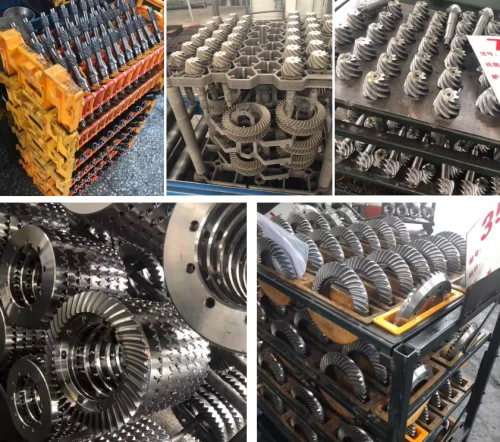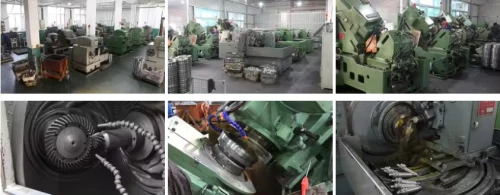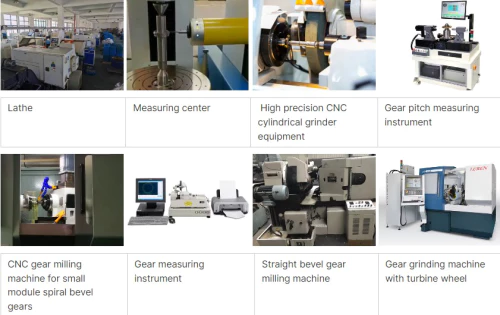Forging Bevel Gear Surface Roughness Measurement Devices
Introduction
Forging bevel gears are a type of bevel gears that are manufactured through the forging process. Forging involves shaping metal through the application of localized compressive forces, typically using a die or hammer. In the case of bevel gears, the forging process is used to form the gear teeth and create the desired gear geometry.
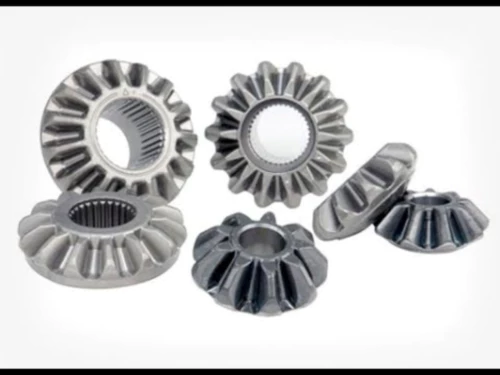
Advantages of Forging Bevel Gears
- High Strength: Forging bevel gears exhibit high strength due to the compressive forces applied during the forging process.
- Improved Fatigue Resistance: The forging process helps to improve the fatigue resistance of bevel gears, making them more durable and long-lasting.
- Precise Gear Tooth Geometry: Forging allows for precise control over the gear tooth geometry, ensuring optimal performance and efficiency.
- Cost-Effectiveness: Despite the initial investment in forging equipment, the cost-effectiveness of mass production makes forging bevel gears a cost-effective choice.
- Versatility in Material Selection: Forging can be performed on various materials, allowing for flexibility in material selection based on specific application requirements.
- Enhanced Structural Integrity: The forging process results in a uniform grain structure, enhancing the structural integrity and overall performance of the bevel gears.
- Tailored Mechanical Properties: The forging process allows for the tailoring of mechanical properties, such as hardness and toughness, to meet specific application needs.
- Reduced Lead Time: Compared to other manufacturing methods, forging bevel gears can be produced with shorter lead times, ensuring faster delivery.
- Environmental Sustainability: Forging is a relatively eco-friendly manufacturing process, as it produces less waste and consumes less energy compared to alternative methods.
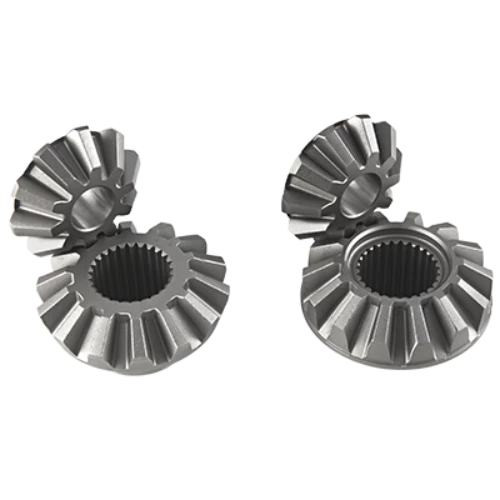
Working Principles
Forging bevel gears operate based on the fundamental principles of gear mechanisms. They consist of two intersecting shafts, each with a conically shaped gear (bevel gear) mounted on it. The teeth of the bevel gears are designed to have a specific tooth profile, such as straight, spiral, or hypoid, depending on the application requirements.
When the input shaft rotates, the engagement of the teeth of the bevel gears causes a transfer of rotational motion and torque to the output shaft. The contact between the mating teeth ensures power transmission while maintaining proper alignment and smooth operation.
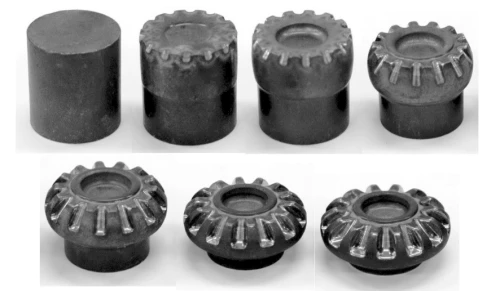
Applications
- Automotive Industry: Forging bevel gears are widely used in automotive applications, such as in drivetrain systems and differential mechanisms.
- Industrial Machinery: Various types of industrial machinery, including heavy-duty equipment and machinery, utilize forging bevel gears for power transmission.
- Aerospace and Defense: Aerospace and defense applications require reliable and high-performance bevel gears, making forging bevel gears an ideal choice.
- Renewable Energy: Forging bevel gears play a crucial role in the renewable energy sector, particularly in wind turbines and solar power systems.
- Marine and Shipbuilding: Marine and shipbuilding applications demand durable and corrosion-resistant bevel gears, which can be achieved through forging processes.
- Agricultural Machinery: Forging bevel gears are used in agricultural machinery, such as tractors and harvesters, for efficient power transmission.
- Power Generation: Power generation facilities, including hydroelectric and thermal power plants, rely on forging bevel gears for smooth operation.
- Robotics and Automation: Robotics and automation systems often require precise and reliable gear mechanisms, making forging bevel gears an excellent choice.
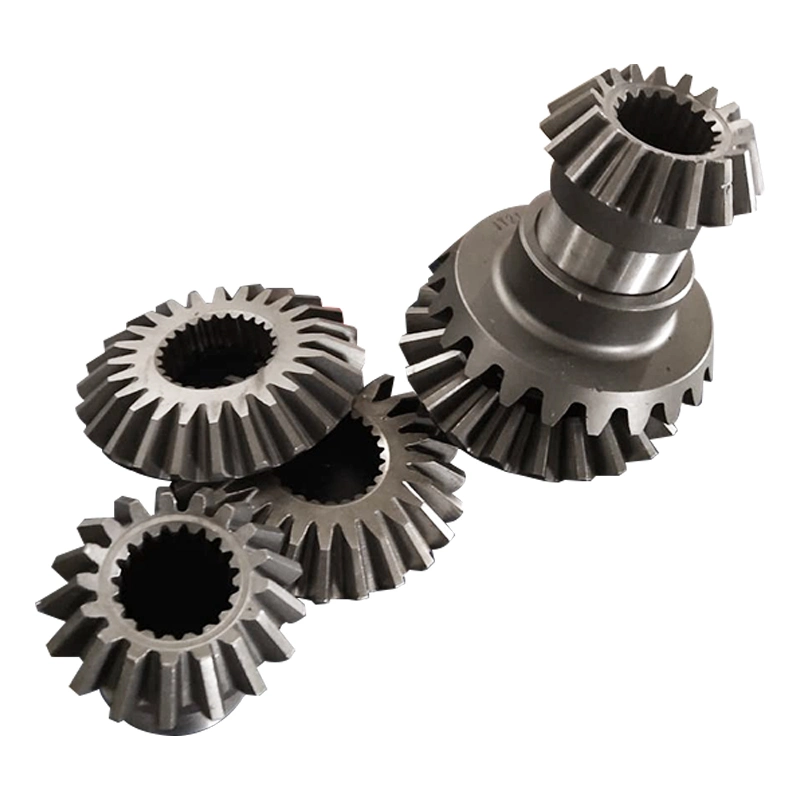
Installation and Maintenance
Installation:
- Proper Alignment: Ensure proper alignment of the bevel gears during installation to avoid misalignment issues.
- Lubrication: Apply appropriate lubrication to reduce friction and ensure smooth operation.
- Mounting Bolts: Use proper mounting bolts and ensure secure fastening to prevent loosening during operation.
- Inspection: Thoroughly inspect the bevel gears after installation to detect any potential issues or defects.
Maintenance:
- Lubrication: Regularly lubricate the bevel gears to maintain optimal performance and prevent premature wear.
- Cleaning: Keep the gear system clean to prevent the accumulation of debris and contaminants that can affect performance.
- Inspection: Periodically inspect the bevel gears for signs of wear, damage, or any other issues that may require maintenance.
- Replacements: Replace any worn or damaged bevel gears promptly to avoid further damage to the system.
- Gearbox Maintenance: If applicable, follow the manufacturer's guidelines for gearbox maintenance to ensure proper functioning.
- Load Monitoring: Regularly monitor the load on the bevel gears to prevent overloading and potential failures.
- Training and Expertise: Ensure that maintenance personnel are adequately trained and have the necessary expertise to handle bevel gear maintenance.
- Record-Keeping: Maintain proper records of maintenance activities, including lubrication schedules, inspections, and replacements, for future reference.
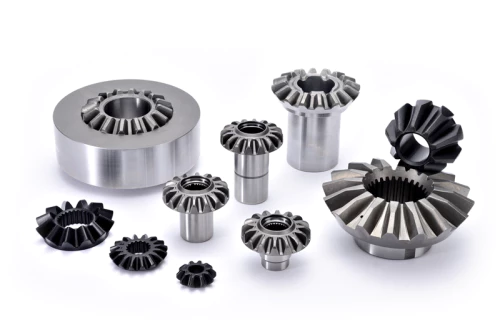
How to Select the Right Forging Bevel Gear
- Application Requirements: Consider the specific requirements of the application, such as load capacity, speed, and torque, when selecting a forging bevel gear.
- Design and Specifications: Evaluate the design and specifications of the bevel gear to ensure compatibility with the intended application.
- Material Selection: Choose the appropriate material for the bevel gear based on factors like strength, durability, and resistance to wear and corrosion.
- Quality and Reliability: Select a forging bevel gear from a reputable manufacturer known for producing high-quality and reliable products.
- Load-Carrying Capacity: Determine the load-carrying capacity of the bevel gear to ensure it can handle the expected loads without failure.
- Efficiency and Performance: Consider the efficiency and performance characteristics of the bevel gear to optimize the overall system performance.
- Customization and Adaptability: If necessary, choose a forging bevel gear that can be customized or adapted to meet specific application requirements.
- Cost Considerations: Evaluate the cost-effectiveness of the bevel gear in terms of both initial investment and long-term maintenance and operation.
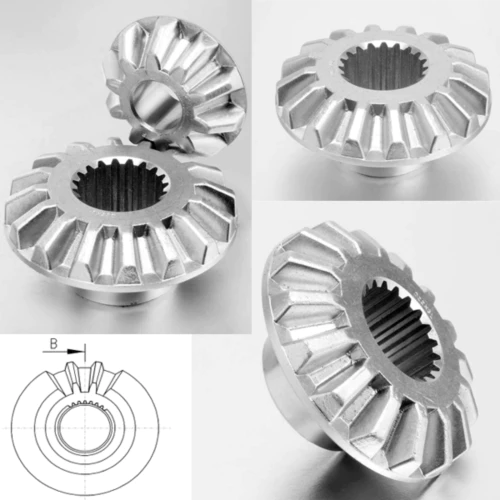
About Shaoxing Chaoli
Shaoxing Chaoli is a professional manufacturer of gears in China. Our products are exported to different countries such as Spain, the Netherlands, the United States, South Korea, Turkey, and Russia. We are dedicated to helping customers develop new products and solve technical and quality problems. Our commitment is to meet the needs of users with high-quality products, fair prices, and perfect services.
In short, we adhere to the principles of quality first, timely delivery, and credit first. We treat every business partner sincerely and welcome friends from the business community to cooperate with us and create brilliance together. Besides forging bevel gears, Shaoxing Chaoli also offers other gear products such as Worm Gear, Spiral Bevel Gear, Helical Gear, Spur Gear, Plastic Gear, and Metric Gear Rack. Customers are welcome to inquire about customized products.
